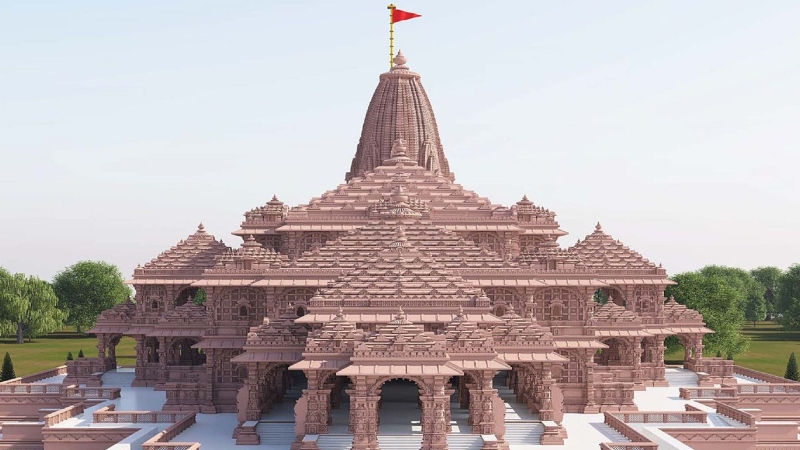
Ayodhya Ram Temple built to last long for centuries
Only best quality granite, sandstone, and marble used
Unique construction method involved lock and key mechanism
The Ayodhya Ram Temple, dedicated to Ram Lalla or infant Lord Ram, stands as a remarkable fusion of traditional Indian heritage architecture and modern scientific construction methods, ensuring its longevity for centuries.
Reportedly, according to Nripendra Misra, the chairperson of the temple construction committee, the temple has been meticulously designed to endure for over a thousand years, with the involvement of top Indian scientists and the incorporation of ISRO technologies.
The architectural blueprint, based on the Nagar Shaily or northern Indian temple designs, was crafted by Chandrakant Sompura, a 15th-generation architect in a family tradition of designing heritage temples. Having designed over 100 temples, Sompura envisions the Ayodhya Ram Temple as an unparalleled and splendid creation in the history of architecture, not just in India but globally.
Spanning 2.7 acres with a built-up area of approximately 57,000 square feet, the three-floor temple is a towering structure, reaching a height of 161 feet, about 70% of the Qutab Minar’s height.
Notably, the construction is distinct in its avoidance of iron and steel, as explained by Nripendra Misra, who highlights the limited lifespan of iron for just 80-90 years.
Instead, the temple employs the very best quality granite, sandstone, and marble, with no use of cement or lime mortar in the joints.
Dr. Pradeep Kumar Ramancharla, Director of the Central Building Research Institute, Roorkee, emphasizes the unique construction method involving a lock and key mechanism, utilizing grooves and ridges throughout the entire structure.

Ayodhya Ram Temple built to last long for centuries
Only best quality granite, sandstone, and marble used
Unique construction method involved lock and key mechanism
The Ayodhya Ram Temple, dedicated to Ram Lalla or infant Lord Ram, stands as a remarkable fusion of traditional Indian heritage architecture and modern scientific construction methods, ensuring its longevity for centuries.
Reportedly, according to Nripendra Misra, the chairperson of the temple construction committee, the temple has been meticulously designed to endure for over a thousand years, with the involvement of top Indian scientists and the incorporation of ISRO technologies.
The architectural blueprint, based on the Nagar Shaily or northern Indian temple designs, was crafted by Chandrakant Sompura, a 15th-generation architect in a family tradition of designing heritage temples. Having designed over 100 temples, Sompura envisions the Ayodhya Ram Temple as an unparalleled and splendid creation in the history of architecture, not just in India but globally.
Spanning 2.7 acres with a built-up area of approximately 57,000 square feet, the three-floor temple is a towering structure, reaching a height of 161 feet, about 70% of the Qutab Minar’s height.
Notably, the construction is distinct in its avoidance of iron and steel, as explained by Nripendra Misra, who highlights the limited lifespan of iron for just 80-90 years.
Instead, the temple employs the very best quality granite, sandstone, and marble, with no use of cement or lime mortar in the joints.
Dr. Pradeep Kumar Ramancharla, Director of the Central Building Research Institute, Roorkee, emphasizes the unique construction method involving a lock and key mechanism, utilizing grooves and ridges throughout the entire structure.
